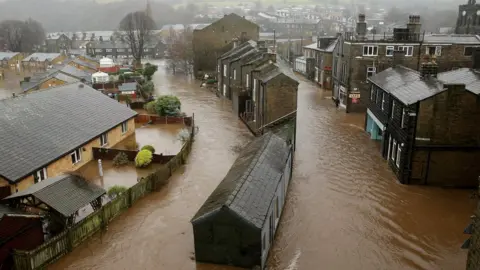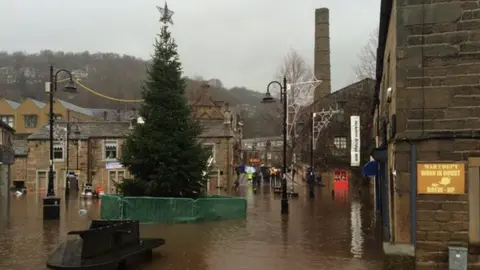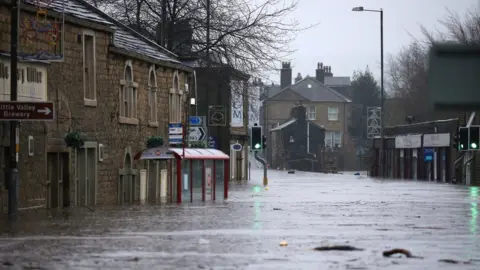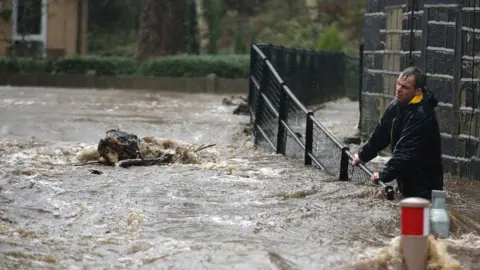Calder Valley flood defences improved with £8m grants
 Getty Images
Getty ImagesMore than £8m of grants have helped people and businesses hit by the 2015 floods in the Calder Valley to improve their flood defences.
More than 3,000 properties were flooded in the West Yorkshire valley on 26 December 2015.
Households have been given £6m and businesses £2.7m in grants to improve flood resilience, reported the Local Democoracy Reporter Service.
The scheme was "considered to be highly successful", according to a report.
Communities in Hebden Bridge, Mytholmroyd, Sowerby Bridge and other areas were badly hit by the floodwaters.
Barry Collins, Calderdale Council's deputy leader, speaking in 2016 said: "It is absolutely crucial to make clear just how deadly serious those floods were last Boxing Day.
"Had it not been a holiday, in my view people would have been killed."

 Getty Images
Getty ImagesWork to give more protection to 1,347 homes has been completed with an average grant of £4,500 per property, said the report by the Community Resilience Operational Group.
Almost 600 grants totalling £2.7m have been paid to businesses and all funding was now paid out, said the report.
The Environment Agency lists two ways that homes and businesses can protect properties with "flood resistance" measures, and making a building "flood resilient".
Flood resilient to limit the damage and allow residents to return to their properties quickly, while flood resistance refers to preventing water from entering in the first place.
Using water-resistant materials and moving electrical sockets higher for instance can allow residents to return to their properties quicker after a flood.
A final evaluation report on the work is expected to be published by September.
The report was given to the Calderdale Flood Recovery and Resilience Programme board meeting in Halifax.
The programme in place since 2012 brings together partners including the council, Environment Agency, local flood groups and Network Rail.
Its aim is to substantially reduce the impact of flooding and work with communities to build resilience against future events.
 Getty Images
Getty Images